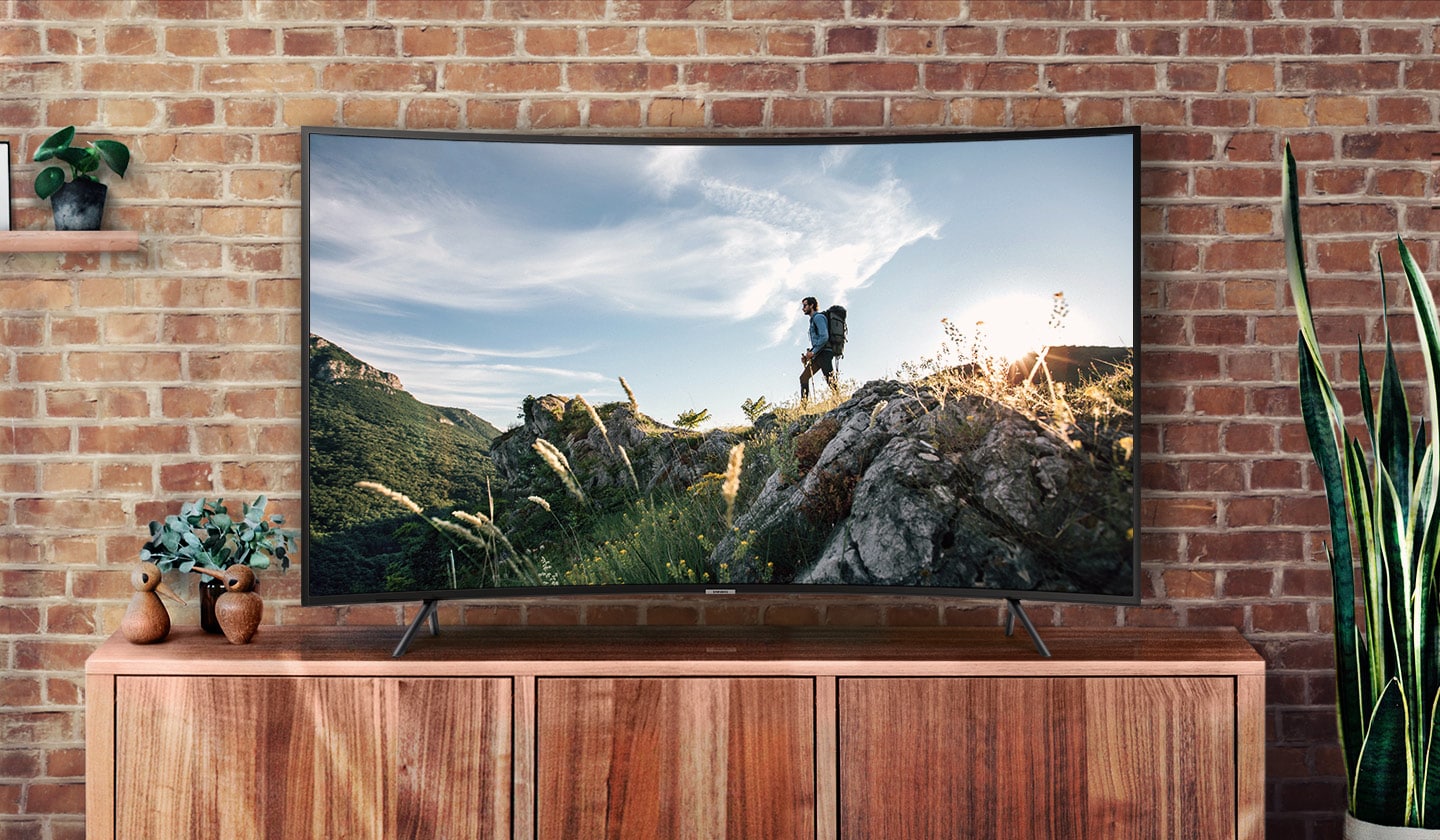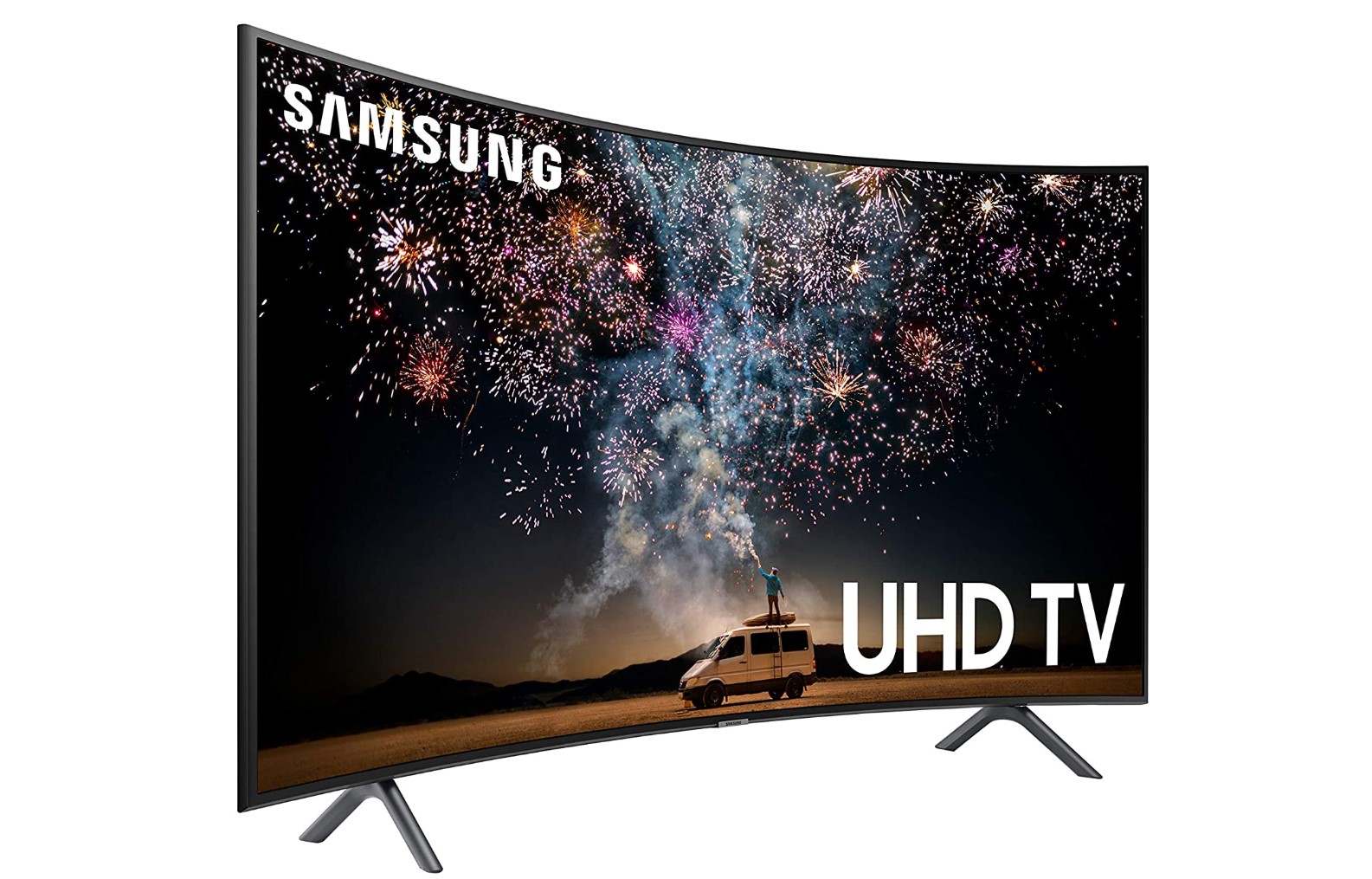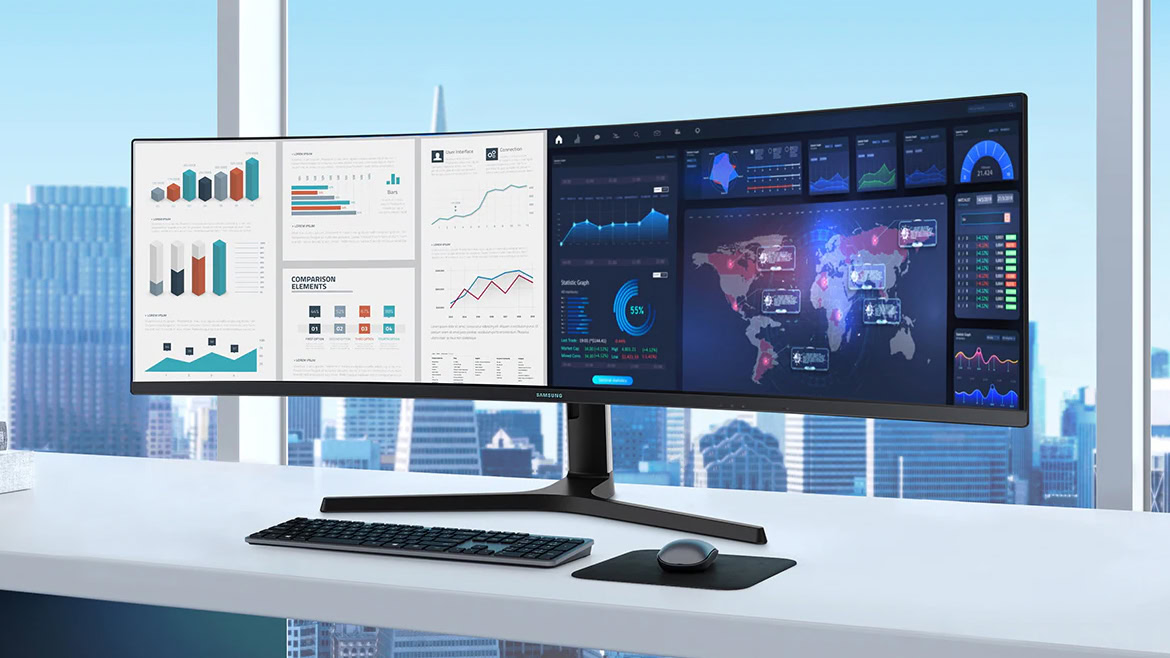Affiliate links on Android Authority may earn us a commission. Learn more.
Curved TVs: Do they still exist and should you buy one?
Published onDecember 26, 2024

For a few years, manufacturers touted curved screens as the next major evolution in smart TVs. They were among the most expensive TVs you could buy, in fact, yet they never cemented a permanent place in home theaters. Their 15 minutes of fame may be over, but what if you still want to give one a try? Here’s everything you need to know about the current state of curved TVs.
We’ll come right out and tell you — there are very few curved TVs to choose from today. Samsung is essentially the only manufacturer that still produces them, though curved PC monitors are increasingly popular. We’ll give a few reasons why this might be, as well as some general pros and cons for curved tech.
What are curved TVs?
It’s pretty much in the name — we’re talking about TVs that aren’t flat. The curved TV trend first kicked off during CES 2013. Flexible OLED panels were relatively new back in those days, so manufacturers were still figuring out the best ways to implement them.
The whole idea of adding a curve came from IMAX theaters. Their massive panoramic displays mimic the shape of the human eye, in theory immersing you even further in the experience. TV manufacturers like Samsung and LG figured you’d enjoy the same experience in your living room.
It didn’t quite work out that way, not least because IMAX projections consume your entire field of vision — something a 55- or even 75-inch TV in your living room can never achieve. Sales numbers were low, and Samsung began shifting away from curved TVs several years ago. Something like the LG OLED Flex could technically be counted as a curved TV, but that seems to be a secondary focus of the product.
Why haven’t they made a mainstream impact?
To elaborate on the immersion problem, IMAX screens are not only large enough to place you in the middle of the action but are also surrounded by a darkened theater. With curved TVs, if you sit off-center or don’t turn off enough lights, you’re in for a bad time. The further you sit to one side or the other, the more the picture will appear to bend. Room lights in the wrong place can also ruin your experience completely since a curved screen picks up a lot of glare.
On top of everything else, it can difficult to find a space for a curved set. Early models didn’t come with mounting options, so you had to sit them on a stand. And regardless of whether something is mounted or in an entertainment center, curved TVs will never sit flush with a wall.
What about curved monitors?
Curved monitors are actually growing in popularity — why? Simply put, the things that don’t work in a living room setting suddenly work again when it’s a single person in front of a PC. You tend to sit much closer to a monitor than a TV, which means the curve can fill more of your field of vision. It actually helps counteract edge distortion, bringing all parts of an image to roughly the same distance from your eyes.
Ultimately, curved monitors bring you closer to the action, whether you’re binging shows, gunning down enemies, or working on your next YouTube video. Manufacturers like Samsung and LG have taken what they’ve learned from their TV businesses and become leaders in the monitor landscape.
But don’t feel you have to limit yourself to those brands when it comes to buying a curved monitor. Companies like ASUS, HP, and Dell/Alienware are big players and can potentially offer more bang for your buck.
Curved TV pros and cons
We’ve gone through what curved TVs are, what went wrong, and a few reasons why you might want a curved monitor instead (if anything). Sometimes though a simple pro and con breakdown can be the most helpful. Here are a few reasons you might still consider a curved TV, as well as all the reasons to leave the tech behind.
Pros
- Immersive experience — A curved TV follows the curve of your eye if you’re in its sweet spot. You have to sit directly in the focal point of the display, but it should fill most of your peripheral vision as if you were in a movie theater. You can make this immersion even more intense with a powerful surround-sound system.
- Better contrast — Flat TVs tend to spread light around, whereas curved units concentrate on one area. It’s not always passed off as a feature, but this helps provide the most accurate color recreation possible. Flat TVs have improved substantially in the past few years, so this battle may be closer to a draw.
- Comfortable viewing (in the right seat) — Our eyes are built for a 3D world, yet we spend most of our time with flat screens. This can lead to eye strain that you don’t have with a rounded display. It’s one reason curved monitors are popular for extended workdays.
- Depth — Assuming you buy a large enough TV, you can sense a kind of 3D effect from the display, albeit not like VR or true 3D.
Cons
- Few available products — The LG OLED Flex aside, you can usually only buy curved TVs from Samsung at this point, and even then, they’re probably outdated.
- Extra space and tough to mount — Flat TVs occupy relatively little space, especially if you mount them on a wall. Curved TVs protrude along every axis and may not be mountable at all, depending on the TV and your room situation.
- Glare — We’ve said it before, but it bears repeating that glare is a curved TV killer. It’s almost impossible to find that sweet spot unless you turn all your lights off. Even then, you can’t always block light from outside your home.
- Size matters — Most of the benefits associated with curved TVs require the biggest screen possible. You ideally want the curve to fill your peripheral vision. You could sit as close as you would with a monitor, but that’s impractical on multiple levels.
What are your curved TV options?

We’ve touched on everything you could want to know about curved TVs, so now it’s decision time. You don’t exactly have many to choose from, so the shopping phase will probably be the fastest part of your journey. Seriously, here are the only new(ish) curved TVs we could find, as well as their list prices. If you want other options, you’ll have to search for used, renewed, or outdated sets.
